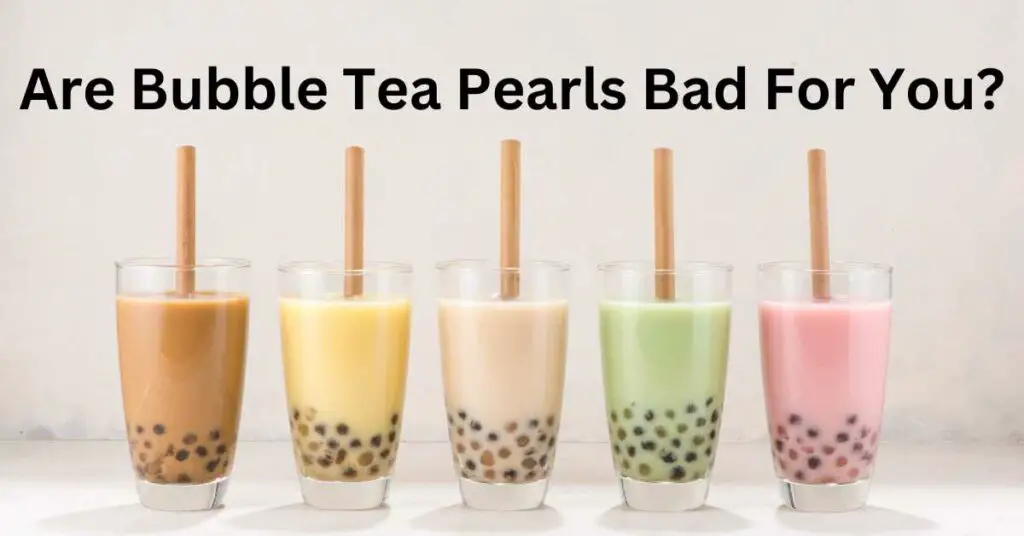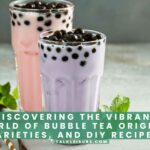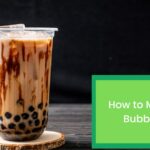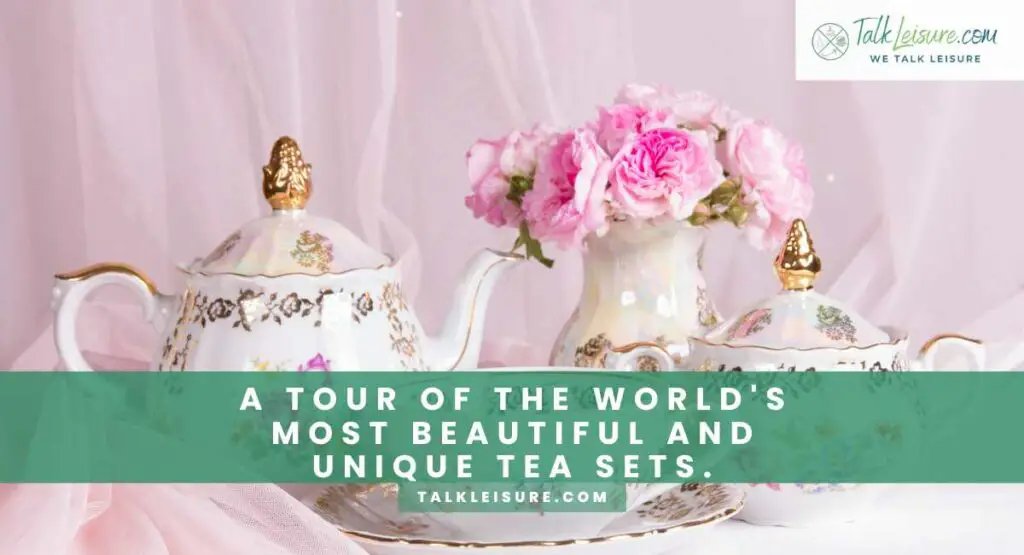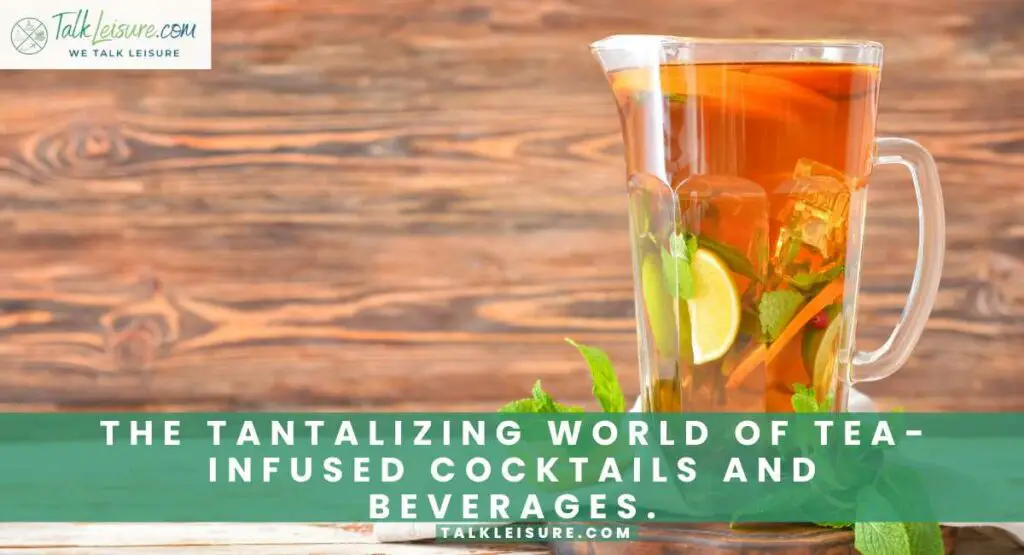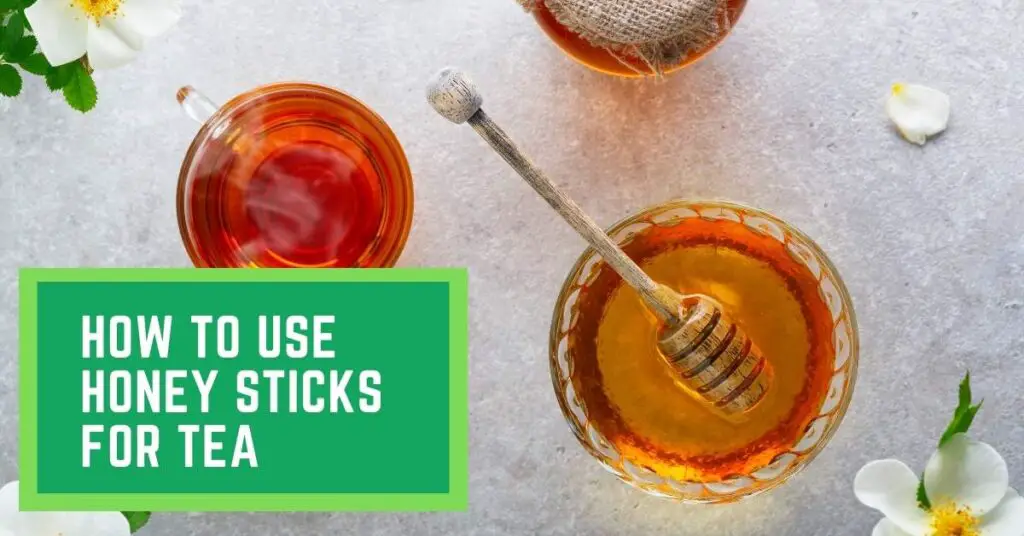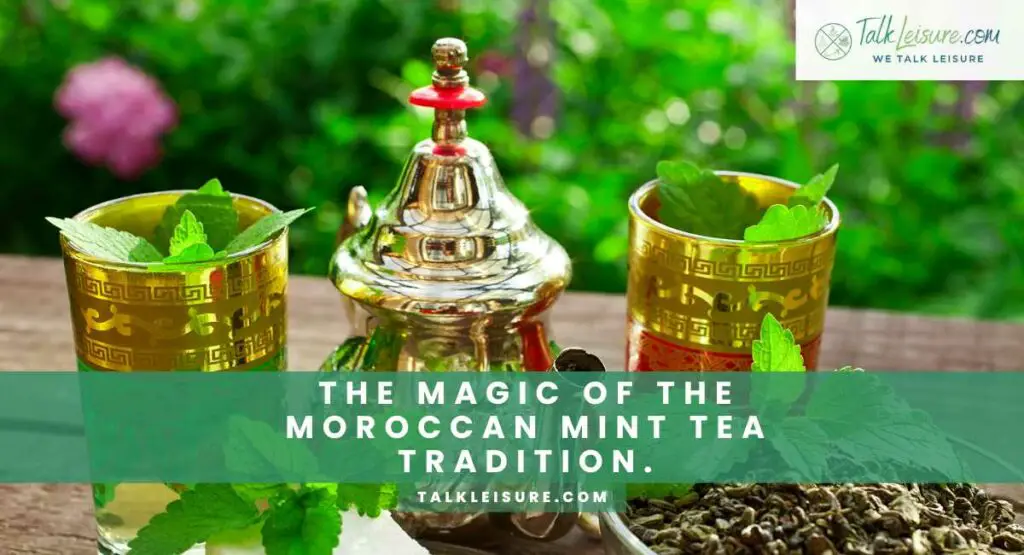Bubble tea, also known as boba or pearl tea, is a Taiwanese tea-based drink that has gained popularity around the world in recent years.
It typically consists of brewed tea, milk, and chewy tapioca pearls. The tapioca pearls are what give bubble tea its unique texture and they are usually made from cassava root. Bubble tea can be served hot or cold, and it can be customized with different flavors and toppings.
While it is traditionally made with black tea, green tea, or oolong tea, there are now many variations made with fruit juices or even coffee. Whether you’re a fan of the original or looking to try something new, there’s a bubble tea out there for everyone to enjoy.
No, bubble tea pearls are not bad for you. In fact, they are almost pure starch and contain very few nutrients. On their own, they have no impressive health benefits or adverse effects.
However, if you eat them in large quantities, they can have a negative impact on your health. This is because they are high in calories and can cause weight gain. Additionally, the sugar in bubble tea pearls can lead to tooth decay. So, while bubble tea pearls are not inherently bad for you, it is important to eat them in moderation.
Tips for enjoying bubble tea without worrying about the pearls:
While bubble tea can be a delicious and refreshing treat, the pearls that are often used to top the drink can pose a health risk if they are not properly cooked or handled. However, there are several ways to enjoy bubble tea without worrying about the pearls.
For instance, choose tea varieties that are lower in sugar for a healthier drink.
You can also request for your pearls to be cooked, as this can help reduce any potential risk.
In addition, add fruits or other toppings to your tea for added nutrition and flavor.
Enjoy bubble tea in moderation as part of a healthy diet and lifestyle!
By following these tips, you can enjoy all the deliciousness of bubble tea without any of the worries.
What Are Bubble Tea Pearls Made Of?
Bubble tea pearls are typically made from tapioca, which is a root vegetable that is high in starch.
Tapioca pearls are cooked in water until they become chewy and then they are added to bubble tea.
While tapioca is the most common type of bubble tea pearl, there are also those made from other ingredients such as sago, fruits, or even coffee.
Bubble tea pearls add a unique texture to the drink and can be customized to suit one’s preference. For example, tapioca pearls are often enjoyed for their chewy texture, while coffee bubbles offer a more firm and crunchy bite.
Fruity bubbles are also popular for their sweetness and flavor. When choosing bubble tea pearls, it is important to consider what type of texture and flavor you prefer in order to find the perfect match for your taste buds.
Does Boba Contain Carcinogens?
Boba, also known as bubble tea, has gained popularity around the world, and particularly in Taiwan, where it originated. The drink is a combination of tea, syrup, and tapioca balls, and is often referred to as boba milk tea.
However, there has been some concern over the potential health risks associated with boba, particularly its possible carcinogenic properties.
While it is true that some studies have found high levels of potentially harmful chemicals in certain types of boba, the risk to consumers appears to be relatively low and depends on a number of factors, including how the boba is made, what type of tea is used, and how often someone consumes it.
It is important to note that not all boba contains carcinogens, and that the risk of exposure can vary depending on the way the drink is prepared. For example, boba made with artificial sweeteners or flavorings may contain higher levels of harmful chemicals than those made with natural ingredients.
Additionally, some types of tea can contain high levels of pesticides or heavy metals, which could increase the risk of toxins and other harmful substances in the drink.
Despite these potential risks, many people still enjoy drinking boba milk tea, and there are many ways to make it that can reduce the risk of exposure to harmful chemicals. Some experts suggest using organic and natural ingredients whenever possible, and avoiding additives like artificial sweeteners or flavorings. Other recommendations include using filtered water and milk, and choosing teas that are known to be low in pesticides or heavy metals.
Ultimately, the decision of whether or not to drink boba milk tea is up to the individual, but it is important to be aware of the potential risks and take steps to minimize them.
By choosing high-quality ingredients and using safe preparation methods, it is possible to enjoy this popular drink without exposing oneself to harmful substances. So while boba may contain some carcinogens, its overall risk to consumers appears to be relatively low and should not be a cause for concern for most people.
Is Boba Tea Healthy?
Boba tea has gained immense popularity among youngsters and people who prefer their caffeine fix in the form of a sugary tea drink.
Boba milk tea, a unique concoction that originates from Taiwan, includes boba or tapioca pearls that add chewiness and a unique texture to the drink.
While many enthusiasts argue that boba tea is an excellent source of antioxidants and can improve cardiovascular health, it’s essential to consider its high sugar content.
Most tea contains some natural sugars, but the added syrups, condensed milk, and tapioca pearls, make boba milk tea very high in sugar and calorie content. Studies show that an average-sized serving of boba milk tea can contain upto 50 grams of sugar and almost 500 calories, equivalent to consuming a can of soda. While boba tea can be an occasional indulgence, it’s important to limit its consumption due to its high sugar intake and caloric content.
It’s advisable to opt for healthier alternatives like unsweetened tea, fruit-infused drinks, or skip on the tapioca pearls for a lighter version of the drink.
How Many Calories Are In Bubble Tea Pearls?
While bubble tea can be relatively high in calories, the exact number of calories varies depending on the ingredients used. For example, one small tapioca pearl has about 5-10 calories. This means that a cup of bubble tea with around 20 pearls can have anywhere from 100-200 calories.
The majority of these calories come from carbohydrates, as tapioca is almost pure starch. However, bubble tea can also be made with less sugar and fewer tapioca pearls, which will reduce the calorie content.
In addition, bubble tea made with green or black tea may contain slightly fewer calories than those made with other types of tea. As a result, the calorie content of bubble tea can vary depending on the recipe used.
How To Make Your Own Bubble Tea Pearls?
Tapioca pearls, also known as bubbles or boba, are a essential component of bubble tea. While you can purchase tapioca pearls from most bubble tea shops, it is also possible to make them at home. The process is fairly simple and only requires a few ingredients.
- To make the pearls, mix the tapioca flour with water in a bowl until it forms a dough.
- Then, use your hands to roll the dough into small balls. Next, cook the balls in boiling water for about 30 minutes.
- Once they are cooked, drain them and then let them cool.
- Once they have cooled, you can add them to your favorite bubble tea recipe!
Home-made tapioca pearls are a great way to enjoy bubble tea without having to leave the house, and they can also be a fun project to do with friends or family. With just a little bit of time and effort, you can enjoy delicious bubble tea any time you want!
Recipes Using Bubble Tea Pearls:
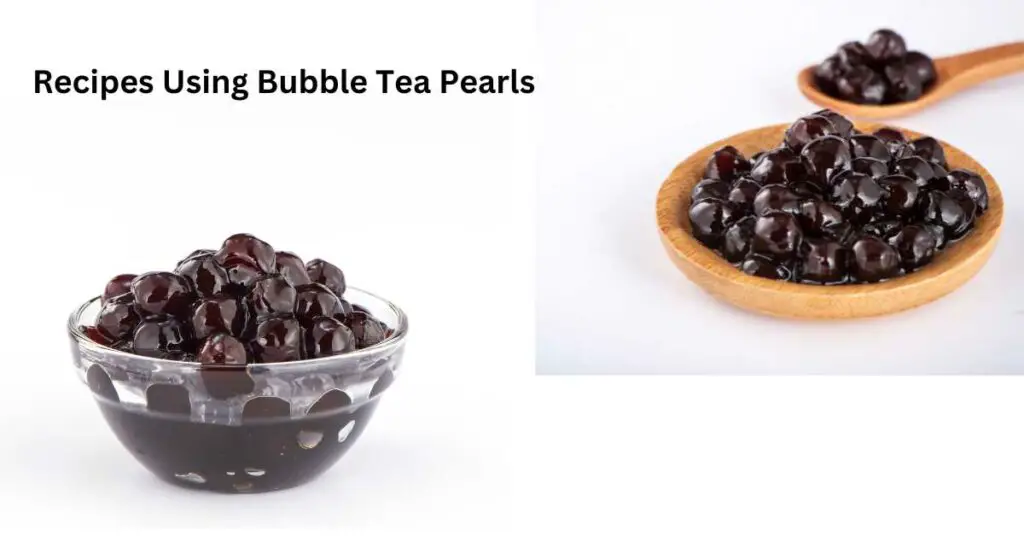
1. Classic Bubble Tea: This recipe uses black tea, milk, and sugar for a delicious and classic bubble tea.
2. Green Tea Bubble Tea: This recipe uses green tea, milk, and sugar for a refreshing twist on the classic drink.
3. Fruit Bubble Tea: This recipe uses your favorite fruits, such as strawberries or mangoes, to flavor the tea.
4. Coffee Bubble Tea: This recipe combines coffee and tapioca pearls for a unique and energizing drink.
5. Sago Bubble Tea: This recipe uses sago pearls instead of tapioca for a different texture and flavor.
Bubble tea is a delicious and refreshing beverage that can be enjoyed by everyone.
Alternatives To Bubble Tea Pearls:
If you’re looking for a healthier alternative to bubble tea pearls, there are a few different options available. You can request for your pearls to be cooked, as this can help reduce any potential risk. In addition, add fruits or other toppings to your tea for added nutrition and flavor. Enjoy bubble tea in moderation as part of a healthy diet and lifestyle!
Some people may also want to avoid bubble tea altogether due to the high calorie content. If you are watching your calorie intake, there are many alternatives to bubble tea that can be just as delicious and refreshing. These include iced teas, fruit teas, herbal teas, and even sparkling water with fruit juice. By choosing one of these options instead of bubble tea, you can still enjoy a delicious and refreshing beverage without all the calories.
Conclusion
Bubble tea pearls are a fun and delicious addition to any bubble tea recipe. While they do contain some calories, they can be enjoyed in moderation as part of a healthy diet and lifestyle. In addition, there are many alternatives to bubble tea that can be just as refreshing and satisfying.
Best Wishes!

